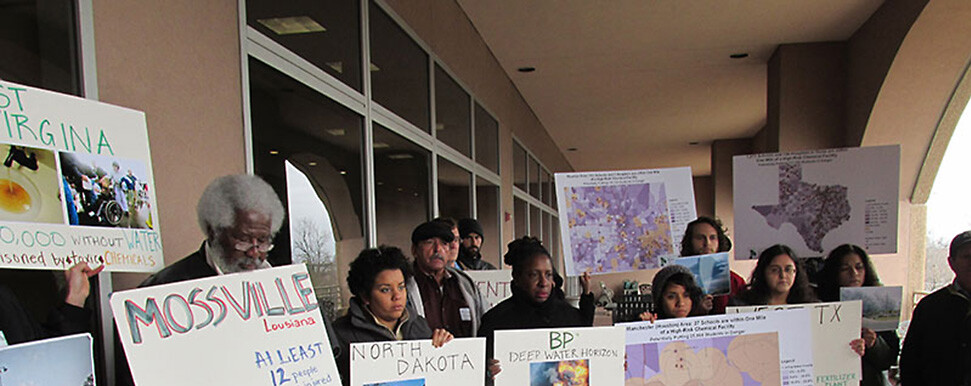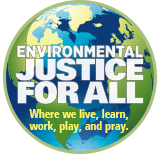
Media
August 28, 2025Environmental Groups Sue EPA Demanding Protections from Hazardous Chemicals
Ivan Moreno, NRDC, imoreno@nrdc.org,312-651-7932
Sean Jackson, Clean Water Action, sjackson@cleanwater.org, 410-971-0051
LaTrice Harrison, Clean Water Action, lharrison@cleanwater.org, 202-985-9464
Deidre Nelms, EJHA, dnelms@comingcleaninc.org, 802-251-0203 ext. 711WASHINGTON, D.C. — A coalition led by environmental justice organizations filed a suit against the U.S. Environmental Protection Agency today for refusing to issue long-overdue rules to prevent hazardous-substance discharges that threaten public health and contaminate waterways. Across the United States, more than 100,000 facilities make, store, or use hundreds of hazardous chemicals linked to reproductive, developmental, and neurological harm – including benzene, hydrogen sulfide, sulfuric acid, hydrogen cyanide, and hydrochloric acid.
“For generations environmental justice communities have lived next to some of the most hazardous facilities in the country that threaten the bodies of water our families rely on to survive. Now more than ever we must prioritize creating safe and healthy places where all of our children can thrive and grow.” said Michele Roberts, National Coordinator of the Environmental Justice Health Alliance for Chemical Policy Reform. “The EPA’s do-nothing approach leaves us one incident away from a catastrophe.”
The lawsuit filed by Environmental Justice Health Alliance, Clean Water Action, and NRDC (Natural Resources Defense Council) seeks to overturn EPA’s 2019 “Final Action” (known by communities as the “Do Nothing Rule”) and get the agency to issue spill-prevention rules mandated by Congress more than 50 years ago under the Clean Water Act.
“We have lived through the tragedies that happen when you lack the safeguards around dangerous industrial facilities, we need actual protections that will prevent a disaster from taking place again.” said Ana Parras, Co-Director of Texas Environmental Justice Advocacy Services (t.e.j.a.s.).
Hundreds of discharges from chemical plants and other facilities are reported annually. These toxic substances can reach rivers, lakes, and streams, putting nearby neighborhoods, disproportionately low-income communities and communities of color, at risk. The lawsuit, filed in the federal court in New York, asks the court to vacate the 2019 decision and direct EPA to go back and finalize a new decision consistent with its statutory mandate to issue spill-prevention and containment regulations.
“This do-nothing action is an insult to communities that have been and continue to be harmed by toxic releases to the waterways we rely on” said Dora Williams, Co-leader of Delaware Concerned Residents for Environmental Justice. “How many people have to get sick and die before the EPA will do their job and protect us all?”
“Prevention costs so much less than responding to a disastrous chemical spill that puts people’s lives and health, water quality, and community well-being at risk,” said Clean Water Action President and CEO Jeff Carter. “Congress was clear that EPA needed to create protections for our people and waterways; they were not directed to ‘wait and see.’”
Despite a 2016 federal court consent decree in which EPA agreed to act, in 2019 the agency finalized a decision not to issue any new rules, outrageously claiming discharges were not frequent or harmful enough to warrant action.
“More than a half century ago, Congress gave Americans a right to protections from toxic chemical spills, but the EPA never has followed through,” said Sarah Buckley, senior attorney at NRDC. “EPA doesn’t get to ignore Congress. Our lawsuit seeks enforcement of these Clean Water Act protections.”
The lawsuit says that:
- In 1972, Congress required the EPA to issue regulations to prevent and contain hazardous-substance discharges from non-transportation-related onshore facilities.
- EPA never has issued those regulations.
- In 2016, EPA agreed, via a court-approved consent decree, to act.
- In 2019, EPA issued a “Final Action” adopting no new protections, asserting hazardous-substance discharges were not frequent or severe enough and that other programs were sufficient.
- The coalition argues that EPA’s “do-nothing” decision violated the Clean Water Act’s clear mandate to issue regulations and that its rationale for refusing to regulate relied on incomplete data and on a patchwork that doesn’t cover all hazardous substances, all facilities, or the full suite of prevention and containment measures required by the Clean Water Act.
“This lawsuit against the EPA is about our basic right to clean water,” said Dr. Maya Nye of People Concerned About Chemical Safety, a community organization based in West Virginia's "Chemical Valley.” “EPA’s refusal to act over the past 50 years is completely unlawful and continues to hurt communities. Protections from toxic discharges into our waterways cannot be put on hold any longer.”
